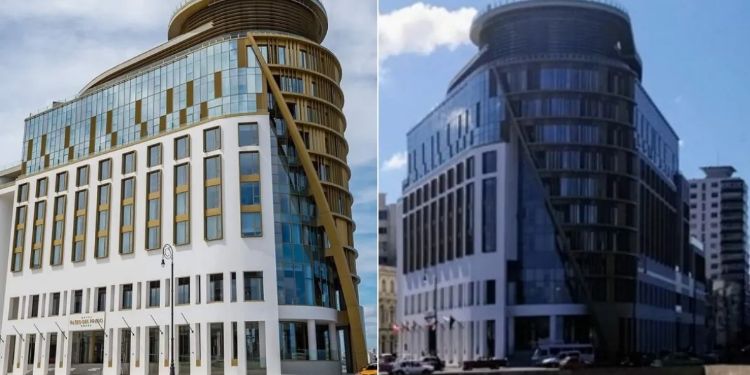The building under construction on K and 23, called to be the tallest in Havana, is once again the object of criticism by specialists. On this occasion, it is Edelberto Díaz Aguilera who attacks “Torre K”, popularly known as “Torre López-Calleja” for being the work of the military conglomerate Gaesa, commanded, until his recent deathby the former son-in-law of Raúl Castro.
In a extensive article titled Whims that cause vertigothe Cuban architect residing in Panama unravels some of the “mistakes” that, in his opinion, the construction has, which resembles the Torres Forma de Toronto designed by the prestigious Frank Gehry studio.
His criticism, which begins by warning that he will ignore “the issue of lavish investments in the Cuban hotel sector” in the face of “the growing needs of the people,” is born, he says, from the one issued by his colleague Rafael Muñoz a month ago and that caused such controversy that the official press was forced to defend the project.
So, Muñoz expressed certain doubts about the surface of the recently poured concrete and about the safety regulations to protect workers and passers-by at that emblematic point in El Vedado, a stone’s throw from La Rampa, the Habana Libre hotel and the Coppelia ice cream parlor.
“Apparently his warning comment was not well received and, for a change, it was taken as an action of dissent, which today is a capital sin on the Island,” says Díaz Aguilera about the response to the post by Rafael Munoz. The architect continues in a sarcastic tone: “We must hope that the guests on the top floors, after seeing the bill that they will have to pay and discovering what the Island authorities have invested in such a property, will ask for binoculars that allow them to see from his room the emblematic buoy of Key West”, referring to the southernmost point of the United States, 90 miles from Cuba, and to the anecdote told about the Spanish king Carlos III when he was informed of the cost of the construction of La Cabin (“it should be able to be seen from Asturias”).
The irony frames an important observation: that the future hotel is poorly oriented, unlike its neighbor the Habana Libre, and will be without views to the north, “the best facade to orient the rooms, [para que no sufran] that Caribbean sun that costs a lot of energy and money to cool”.
Similarly, Díaz Aguilera laments the facade with “insulated glass”, which, if not anti-reflective, “makes the building dazzle the eyes of drivers and passers-by, which could be a preconceived effect to achieve the glare that is expected to produce this work that clearly declares a pretentious gigantism carried out in the most authentic vanity”.
The architect also recalls that the name of the designer of the building is not known. “We don’t know if he is a national or a foreigner, what is clear is that he ignored the architectural typologies that were implemented in his day in the towers that inhabit the capital city.” This is observed, for example, in the “absence of eaves that can break the sunlight”, something more typical of Toronto, “where the sun needs to enter to provide heat to its interior”.
What he calls “tropical monstrosity”, he predicts, will have “powerful cooling systems that will surely consume a lot of electrical energy, all very sustainable, very much at the level of what our teachers taught us that we should not do.”
Diaz Aguilera finds it even more “intrepid” and “cynical” to “import curtain walls, powerful air conditioning systems, state-of-the-art materials,” in the midst of “submission to a cruel blockade imposed on the Island according to the repeated official discourse, which should increase their costs as they argue, a revolutionary challenge to bet on an industry that does not receive tourists above 30% occupancy for a five-year period”.
The architect also alludes to the foundations of the construction, which, because it was built on cavernous rock, caused problems in its day, in the 1950s, for the construction of the Hilton, which would later be called Habana Libre. “What solution did they give to the foundations of the tallest tower in Havana?” “How did their costs behave in relation to a conventional construction?” Diaz Aguilera asks rhetorically.
After other observations, such as the foreseeable cost overrun that the work will end up having with respect to the initially announced investment and the attack that it entails “against the urban composition of a city that should be preserved” while respecting its nature, the architect concludes: “Come from where come the investment of this Tower, promoted by whoever has promoted it, approved by whoever has approved it, whatever the purpose of the political faction, personally, it does not have, nor will it ever have, my approval”.
________________________
Collaborate with our work:
The team of 14ymedio is committed to doing serious journalism that reflects the reality of deep Cuba. Thank you for joining us on this long road. We invite you to continue supporting us, but this time becoming a member of our newspaper. Together we can continue transforming journalism in Cuba.
















